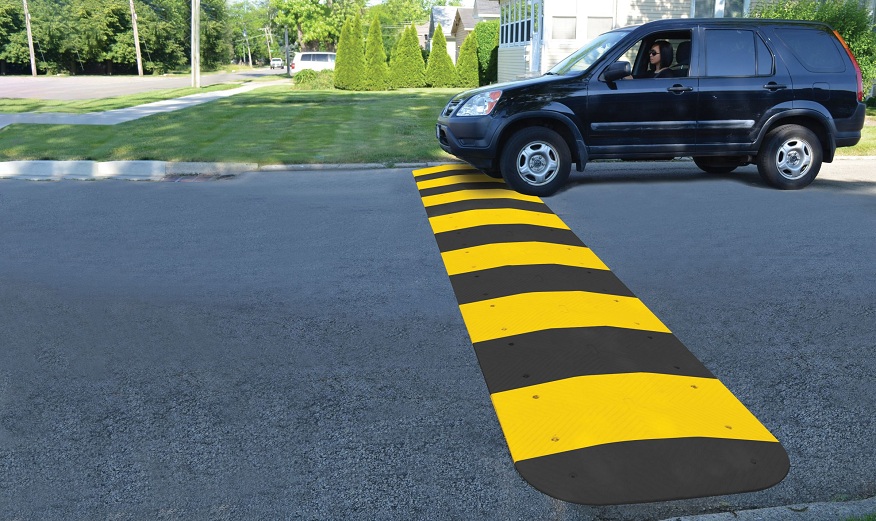Introduction
Welcome to the world of traffic calming, where safety and speed go hand in hand. One of the most effective methods of traffic calming is the installation of speed bumps, also known as speed humps or traffic calming bumps. These raised structures on the road are proven to reduce vehicle speeds and promote safer driving behavior in areas with high pedestrian traffic. If you are considering implementing speed bumps in your community or neighborhood, it is important to understand the different types and benefits to choose the most effective solution. This comprehensive guide will provide you with all the information you need to know about speed bumps, including their purpose, effectiveness, and installation process. So let’s dive in and demystify traffic calming with this in-depth guide to effective speed bump solutions.
Understanding Traffic Calming and Speed Bumps
Traffic calming is a term used to describe measures taken to reduce vehicle speeds and improve safety on roads. One of the most commonly used methods of traffic calming is the installation of speed bumps, also known as speed humps or traffic calming bumps. These raised structures on the road force drivers to slow down and encourage safer driving behavior.
Speed bumps play an important role in promoting road safety, not just for pedestrians but also for drivers. They are often used in residential areas, school zones, and parking lots where there is a high volume of pedestrian traffic. It is crucial to understand the purpose of speed bumps and how they contribute to traffic calming efforts.
By effectively reducing vehicle speeds, speed humps discourage reckless driving and create a safer environment for all road users. They also help to prevent accidents and injuries, making them an essential tool in promoting road safety.
Different Types of Speed Bumps
When it comes to choosing the right speed bump for your community or neighborhood, it is important to understand the different types available and their unique features and benefits.
Traditional Asphalt Speed Bumps:
– Made of durable asphalt material
– Can withstand heavy traffic and extreme weather conditions
– Installed permanently for long-term use
Rubber Speed Humps:
– Made of flexible rubber
– Can be easily removed for temporary events or construction
– Ideal for areas with changing traffic patterns
Modular Speed Bumps:
– Made of interlocking modules
– Can be customized to fit any road width
– Easy to install and remove for maintenance or road repairs
Each type of speed bump has its own advantages, so it is important to choose the one that best suits your needs. Consider the purpose and usage of the area where the speed bump will be installed to determine the most suitable type.
Effectiveness of Speed Bumps
Studies have shown that speed bumps can be highly effective in reducing vehicle speeds by up to 45%. This not only improves safety for pedestrians, but also reduces the risk of accidents and injuries for drivers. However, it is important to note that speed bumps should be used in conjunction with other traffic calming measures, such as signage and road markings, for maximum effectiveness.
In addition to reducing speeds, speed bumps also encourage safer driving behavior by forcing drivers to slow down and pay more attention to the road. This can greatly improve the overall safety of a community or neighborhood.
It is also worth noting that the effectiveness of speed bumps may vary depending on the type and placement. Therefore, it is important to consult with a professional traffic engineer to determine the most suitable type and location for speed bumps in your specific area. Overall, when properly installed and maintained, speed bumps can be a highly effective solution for traffic calming and improving road safety.
Factors to Consider when Installing Speed Bumps
Installing speed bumps requires careful planning and consideration to ensure their effectiveness and safety. Before installing speed bumps, the following factors should be taken into account:
- Road width: The width of the road will determine the size and placement of the speed bumps. It is important to ensure that the speed bumps are placed in a way that does not impede the flow of traffic or cause damage to vehicles.
- Traffic volume: The volume of traffic in the area should also be considered when installing speed bumps. If there is a high volume of traffic, it may be necessary to install additional traffic calming measures along with speed bumps to ensure their effectiveness.
- Emergency vehicle access: The placement of speed bumps should not hinder emergency vehicles from accessing the area. It is important to leave enough space for emergency vehicles to pass through smoothly.
Consulting with a professional traffic engineer can help determine the most suitable type and placement of speed bumps for your specific location. Proper planning and consideration can ensure that speed bumps effectively serve their purpose without causing any inconvenience or safety hazards.
Installation Process of Speed Bumps
Installing speed bumps requires careful planning and consideration. Factors such as road width, traffic volume, and emergency vehicle access must be taken into account. It is recommended to consult with a professional traffic engineer to determine the most suitable type and placement of speed bumps for your specific location.
To begin the installation process, the area where the speed bumps will be placed must be marked and cleared of any debris. The speed bumps should then be assembled according to the manufacturer’s instructions. Next, the speed bumps should be placed and secured using appropriate tools and equipment.
It is important to ensure that the speed bumps are installed properly and at the correct height to be effective. A traffic engineer can assist in this process by providing guidance and recommendations. Regular maintenance and upkeep of speed bumps is essential for their longevity and effectiveness in reducing vehicle speeds.
Additionally, it is important to consider the impact of emergency vehicles and ensure that the speed bumps do not hinder their access. Proper placement and installation can help mitigate any potential issues. By following these steps, speed bumps can be installed effectively and contribute to safer driving conditions.
Maintenance and Upkeep of Speed Bumps
To ensure the longevity and effectiveness of speed bumps, it is important to conduct regular maintenance and upkeep. This not only helps to keep them in good condition but also ensures their continued ability to reduce vehicle speeds and improve safety on the roads.
Regular inspection and repair is crucial for maintaining speed bumps. This includes checking for any cracks or damage, ensuring proper alignment and height, and fixing any worn out markings or signs. It is recommended to conduct these checks at least once a month.
In addition, keeping the area around the speed bumps clean and free of debris is also important for their effectiveness. This can be achieved through regular sweeping and removing any objects that may obstruct the speed bumps.
In terms of cost, proper maintenance and upkeep of speed bumps may require some investment. However, it is a small price to pay for the increased safety and reduced risk of accidents on the roads. By following these maintenance tips, you can ensure that your speed bumps continue to serve their purpose effectively.
Conclusion
In conclusion, speed bumps are a highly effective and proven solution for reducing vehicle speeds and improving safety on roads. Understanding the different types and benefits of speed bumps is crucial in choosing the most suitable option for your community or neighborhood. From traditional asphalt to modular speed bumps, each type has its unique features and benefits that cater to different needs.
Studies have shown that speed bumps can effectively reduce vehicle speeds by up to 45%, making roads safer for both pedestrians and drivers. However, it is important to use speed bumps in conjunction with other traffic calming measures for maximum effectiveness. Careful planning and consultation with a professional traffic engineer is necessary for proper installation and placement.
Regular maintenance and upkeep of speed bumps are crucial for their longevity and effectiveness. By following these guidelines and considering all the factors, you can ensure the success of your speed bump implementation. We hope this comprehensive guide has provided you with all the information you need to make informed decisions and create safer roads for everyone. Thank you for reading.




